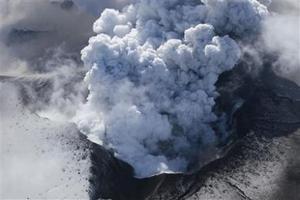Iceland's volcanic eruption will not affect climate patterns
The eruptions of Iceland’s Eyjafjallajökull volcano, while impressive and large enough to shut down air traffic in Europe, are too small, so far, to have an impact on global warming; the 1991 eruption at Mount Pinatube did cool the planet by injecting sulfates into the upper reaches of the atmosphere, where they circulated for over a year, shading the earth; so far the Icelandic volcano has only put out less than 0.004 Mt of SO2, compared to the 20 Mt that Mt. Pinatubo injected; also, the Icelandic emission was only into the lower atmosphere, where the lifetime is on the order of one week, as opposed to a couple years in the stratosphere

Iceland's volcano pumping ash // Source: reuters.com
Some scientists advocate a “geoengineering” approaches to controlling climate change. They propose different methods to cool the planet to offset the effects of greenhouse gases (see “Climate Change Experts Argue for International Geoengineering Effort,” 3 February 2010
The eruptions of Iceland’s Eyjafjallajökull volcano, while impressive and large enough to shut down air traffic in Europe, do not fit the bill. Alan Robock, a professor of environmental studies at Rutgers University, who has studied the impact of volcanoes on climate, told Bullis:
So far the volcano has only put out less than 0.004 Mt of SO2, compared to the 20 Mt that the 1991 Mt. Pinatubo eruption injected into the stratosphere. Furthermore, the Icelandic emission was only into the lower atmosphere, where the lifetime is on the order of one week, as opposed to a couple years in the stratosphere. So too little, and staying in the atmosphere for too short a time. So far.
To make an impact globally, the volcano would have to erupt much more violently (or perhaps trigger nearby volcanoes to erupt violently) so that the larger amounts of sulfates would reach the stratosphere and stay in place, he says. To follow the size of eruptions at the volcano, click here.
